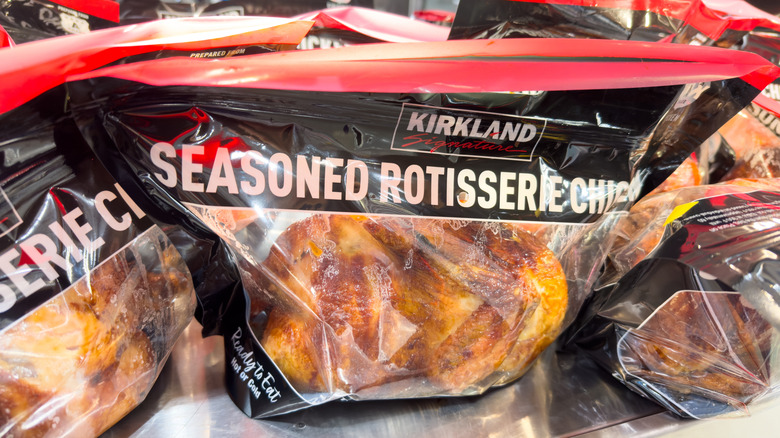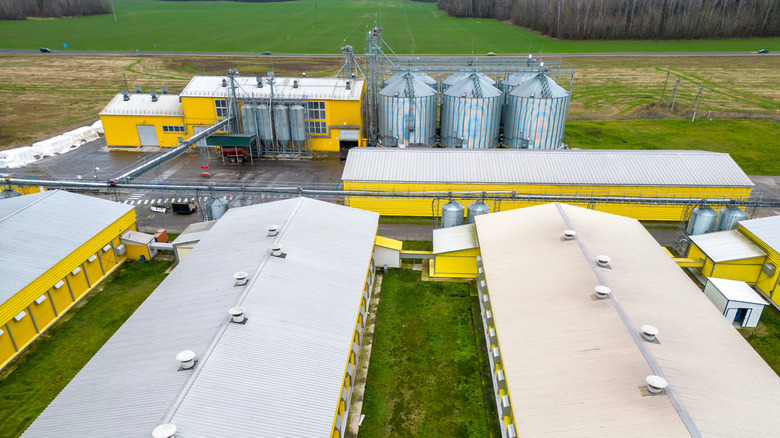How Does Costco's Rotisserie Chicken Stay So Cheap?
Costco has built a reputation around not just its low prices on grocery items, but also its prepared and hot foods, too — namely, its rotisserie chickens. Yes, the roasted fowl that beat out Sam's Club's bird in Food Republic's estimation, perhaps thanks to its saline solution injection, is a huge favorite among busy parents and food preppers alike. Even better than its taste, though, is how cheap it has remained for over 15 years; while the prices on other groceries keep going up, this Costco icon has stayed $5. How is that even possible? As it turns out, it's because of a bit of strategy on the warehouse chain's part; the chicken is what's known as a loss-leader.
A loss-leader is an item that costs more to make or manufacture than it sells for, but it gets people in the door and buying other items that make up for the hit to a company's bottom line. In Costco's case, the roughly three-pound birds are a beloved item whose ultra-low price tag alone is worth a trip to the store for many, and to get to these prized items, you'll typically have to maneuver through pretty much the entire store. That gives Costco many opportunities to catch your eye with something you didn't plan on buying when you entered, but suddenly can't live without, therefore making up for the money it missed out on by selling the chickens so cheaply.
Costco is working to keep rotisserie chicken costs down
Strategic pricing and placement of the rotisserie chickens aren't the only thing keeping them so cheap. In 2019, Costco made a first-of-its-kind move when it got into the broiler business itself. It opened its own chicken manufacturing company in Fremont, Nebraska, in partnership with Lincoln Premium Poultry. The company opened its own feed mill, hatchery, and processing plant, with plans for the new construction to supply Costco with upwards of 6 million chickens per year. Four years later, the plant was processing as many as 2 million chickens per week (or 104 million per year), with Costco ultimately spending $1 billion on this whole endeavor.
The initial total of 6 million chickens processed per year represented just a drop in the bucket for the over 400 million rotisserie birds that Costco sells each year. But with this new figure, the plant is processing what would amount to about a fourth of its yearly sold chickens, and possibly saving 35 cents on what it cost Costco to source each bird before. It might not sound like much, but when it's applied to a huge number like 52 million (the number of chickens processed at the plant that end up roasted and sold for $5, about half the total), it totals about $18 million saved. And that's great news for the consumer, because with savings like that, we'd be surprised if the price on rotisserie chickens at Costco budged any time soon.


